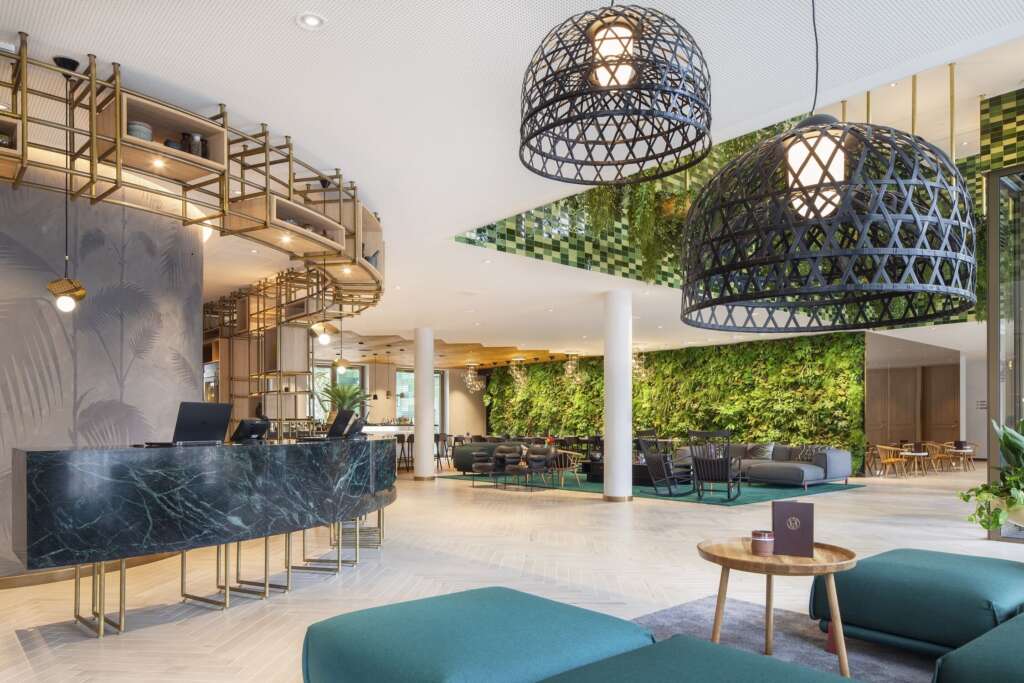Share This Article
Design is everywhere now, snapped, shared, and scrolled through in seconds. Architecture isn’t just about how it works anymore; it’s about how it looks, what it says, and how well it fits the brand or the feed. Even sustainability has jumped on that bandwagon. However, instead of focusing on how green buildings really aid the planet, the spotlight often shines on how cool their living walls or reclaimed wood look in photos.
Welcome to the Instagram age of green architecture, where eco-friendly design is as much about lifestyle and looks as it is about impact. But when style takes center stage, what’s left behind? This piece looks at how chasing aesthetics is changing green architecture and what we might be losing when saving the environment turns into just another trend.
Green Architecture as a Visual Language

Spend a few minutes scrolling through any design blog or architecture feed, and you will start noticing a pattern: walls covered in greenery, airy minimalist homes with natural textures, rooftop beehives, and solar panels gleaming in the sun. These features are real and often rooted in good intentions, but the way they look tends to get more attention than how well they work for the environment.
These days, it is not just about building sustainably; it has to look the part, too.
Consequently, architects and designers often get caught up in creating a visual impression rather than making a real impact. Eye-catching green features make a design seem eco-friendly at first glance, but the quieter, more practical and often more effective solutions like proper insulation, smart building orientation, or water recycling systems go unnoticed. They do the heavy lifting, but rarely make it into the photo.
The Problem With Performative Sustainability

This dynamic turns sustainability into performance. Architecture becomes a kind of green theatre where the audience is the consumer, the critics are Instagram followers, and the props are eco-aesthetics.
But here’s the thing-
The real green work is quiet: Choices like mud construction, thick walls, smart window placement, or even a well-positioned deck can cut energy use drastically, but they don’t look as ‘modern.’
Green becomes a label, not a value: Just slapping on a few eco-features does not make a building sustainable. It is the whole mindset behind the design that matters. So while a glitzy Bangalore home with a green roof might win awards, a humble house in Rajasthan built with lime plaster and local sandstone is doing more for the planet.
The Branding of Green Architecture
Architects, developers, and lifestyle brands now co-opt eco-friendly elements into branding strategies. Sustainability sells, but only if it’s wrapped in aspirational imagery.
Phrases like ‘eco-luxury,’ ‘sustainable lifestyle,’ and ‘green living’ reinforce the idea that being environmentally responsible is a personal brand, a curated identity available to those who can afford the right home, products, and hashtags. This not only turns down the vast majority of people from the sustainability conversation but also divorces environmental action from its ethical roots.
Also Read: Master Architecture Appreciation: How to Experience Buildings Better
Is the Coexistence of Aesthetics and Authenticity possible?

Needless to say, buildings that are both green and appealing can shift the way people think about the environment. But the most significant thing is that beauty comes from purpose, not just polish. Aesthetics should reflect ethics, not distract from them. So it is worth asking: Are these ‘green’ options actually making the building perform better, or are they just for show? Are sustainable materials being used for their impact, or just because they fit the part? Are the so-called green buildings truly lowering emissions, or just wearing a green badge?
A design can be both beautiful and responsible, but the order of priorities matters. When ethics lead, aesthetics follow naturally. It is not about picking one over the other; it’s about letting values guide the vision. When intention drives design, beauty becomes more than surface-deep. In that space, authenticity and aesthetics don’t compete; they elevate each other.
Toward Deeper, Less Visible Sustainability
Some of the greenest buildings in the world may never go viral, and that’s okay. You probably won’t see them on glossy magazine covers or trending architecture pages. Think of a passive solar home built with earth walls, quietly regulating temperature without relying on complex systems. Or a retrofit of an older building that cuts emissions drastically while preserving what already exists. Or a humble community centre that uses shared heating and cooling to reduce energy waste and serve people more efficiently.
These buildings aren’t flashy. They don’t shout about sustainability, they simply do the work. Quietly, effectively and without fanfare. They don’t need dramatic facades, rooftop gardens, or Instagrammable angles to be important. Their impact is real, even if it’s not immediately visible.
If we want to reclaim what sustainability truly means in architecture, we have to stop chasing spectacle and start celebrating substance. This actually means appreciating the buildings that may not ‘look’ green at first glance but truly are, making intentional, measurable changes behind the scenes. Real progress is not always pretty; sometimes, it looks ordinary. But it’s those modest designs, the ones transfixed on performance, purpose, and people, that are crafting a more honest, sustainable future.
Conclusion
With so much attention on what looks good online, it is quite easy to forget what actually makes a building sustainable. The planet doesn’t care if your building has a green roof or a sleek facade, it cares about what it uses, what it wastes, and whether it’s helping create a fairer future.
If we want green architecture to really mean something, we have to stop treating it like a design trend. Real sustainability is about making choices that matter, not just ones that look good.
Sources
https://journals.plos.org/climate/article?id=10.1371/journal.pclm.0000352
https://www.azuremagazine.com/article/7-major-milestones-green-architecture
